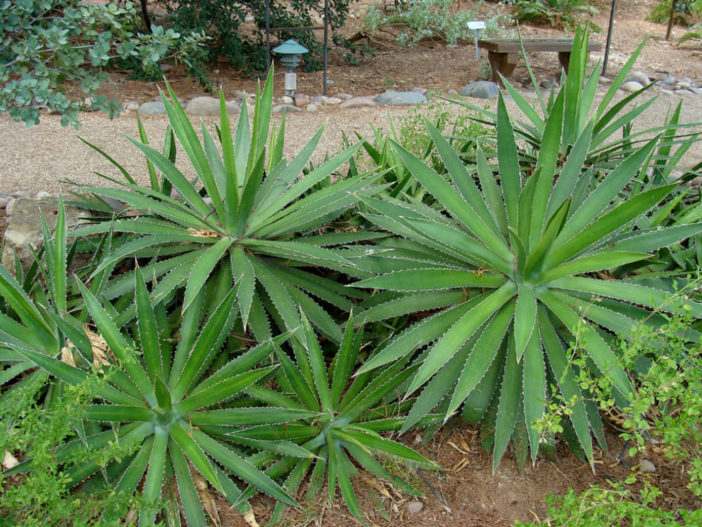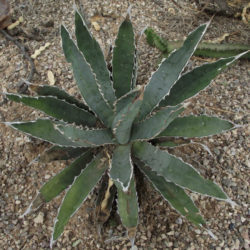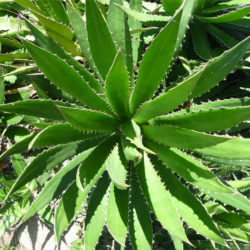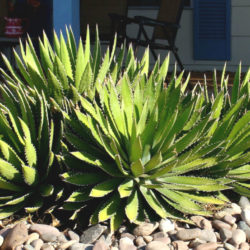Scientific Name
Agave univittata Haw.
Common Name(s)
Thorncrest Agave, Thorncrest Century Plant, Thorn-crested Agave, Thorn-crested Century Plant
Synonym(s)
Agave heteracantha subsp. univittata, Agave heteracantha var. univittata, Agave lophantha, Agave lophantha subsp. univittata, Agave lophantha var. univittata
Scientific Classification
Family: Asparagaceae
Subfamily: Agavoideae
Genus: Agave
Description
Agave univittata, also known as Agave lophantha, is a succulent plant that forms rosettes of stiff, green to yellowish-green leaves with white or light grey, wavy margins lined with relatively large teeth and a small terminal spine. The rosettes grow up to 2 feet (60 cm) tall and 3.3 feet (1 m) in diameter, producing numerous offsets around the base. Leaves are linear to lance-shaped, up to 28 inches (70 cm) long and 2 inches (5 cm) wide.
Mature rosettes produce an erect, up to 16 feet (5 m) tall stalk bearing greenish-white to yellowish-green flowers. The rosettes die after flowering.
Origin
Agave univittata is native to the coastal areas of southern Texas in the United States and northeastern Mexico. It grows on freely draining cliffs, rocky outcrops, and limestone and igneous rock at elevations from 100 to 4,920 feet (30 to 1,500 m).

Hardiness
USDA hardiness zones 9a to 10b: from 20 °F (−6.7 °C) to 40 °F (+4.4 °C).
How to Grow and Care
Agaves are not difficult plants to grow. They are slow-growing and dramatic and will even thrive on a bit of neglect. If you are the type of person who likes to fuss with houseplants and water a lot, Agave is probably not the plant for you. If, however, you are the type of person who likes to set it and forget it, and you have a sunny window, Agave might be the way to go. Be aware that some large varieties will eventually outgrow your room (unless you have a large greenhouse), and Agave can be aggressive. They have irritating sap and sometimes very sharp thorns that can cause injuries to small children and even pets.
In general, Agaves do not need to be repotted every year. Most species commonly found in cultivation grow slowly and take a long to outgrow their pot. It is also best to handle your plant as little as possible since they do not like to be disturbed. When repot, refresh the spent soil with a new potting mix and make sure the plant is firmly anchored in its pot. However, be careful not to pot the Agave too deep, which will encourage stem rot during the growing season.
Learn more at How to Grow and Care for Agave.
Cultivars
Links
- Back to genus Agave
- Succupedia: Browse succulents by Scientific Name, Common Name, Genus, Family, USDA Hardiness Zone, Origin, or cacti by Genus


